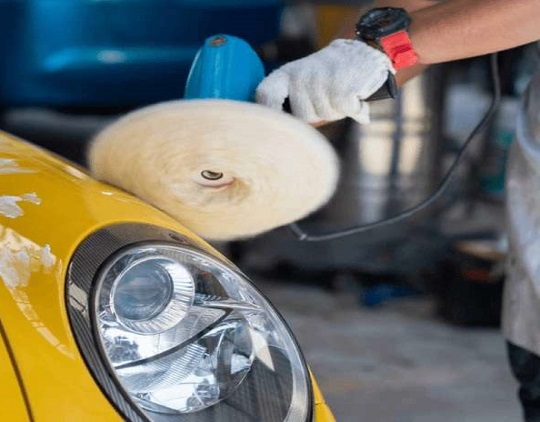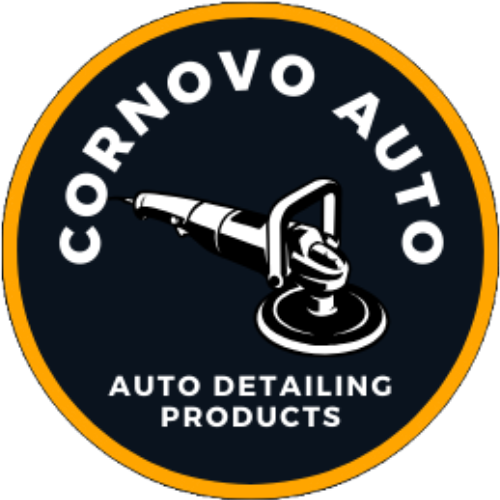What is a wool buffing pad for?
A wool buffing pad is a tool used for polishing and restoring the finish of various surfaces, such as car paint, boat gel coats, and marble countertops. It is made of natural or synthetic wool fibers that are densely packed into a circular pad shape, and it can be attached to a rotary buffer or polisher.
Wool buffing pads are used to remove imperfections such as scratches, swirl marks, and oxidation from a surface, leaving behind a smooth, shiny finish. The dense fibers of the wool pad are effective at cutting through surface blemishes while also buffing the surface to a high shine.
In the automotive industry, wool buffing pads are commonly used for machine polishing to restore a car’s paint finish. They are available in different levels of abrasiveness, from heavy-cutting to fine polishing, and can be used with a variety of compounds depending on the level of correction required.
Overall, wool buffing pads are a versatile and effective tool for achieving a professional-looking finish on a range of surfaces.
When used for car buffing, a wool pad is typically used in conjunction with a polishing compound to remove imperfections from the car’s paint finish. The dense fibers of the wool pad help to cut through surface scratches, swirl marks, and other blemishes while also buffing the surface to a high shine.
Wool buffing pads come in different levels of abrasiveness, from heavy-cutting to fine polishing, which allows for different levels of correction to be achieved. For example, a heavy-cutting wool pad can be used to remove deep scratches and imperfections, while a softer, fine-polishing wool pad can be used to achieve a high-gloss finish.
It is important to note that when using a wool buffing pad for car buffing, it is essential to use the correct technique and apply the right amount of pressure to avoid damaging the car’s paint finish. It is also important to use the appropriate level of abrasiveness and to follow up with finer polishing pads as needed to achieve the desired result.
Is wool pad for polishing or buffing?
Wool pads are typically used for both polishing and buffing, depending on the level of abrasiveness of the pad and the type of surface being worked on. The dense fibers of the wool pad can effectively cut through surface imperfections, while also buffing the surface to a high shine.
In general, wool pads with a more aggressive level of abrasiveness are used for heavy cutting or compounding, which is the initial step in the polishing process to remove deep scratches and other imperfections from the surface. These types of pads are typically used with a heavy-cutting compound and can help to restore the surface to a smooth, even finish.
On the other hand, wool pads with a softer, finer texture are used for polishing and finishing the surface. These pads are typically used with a fine polishing compound to create a high-gloss shine and remove any remaining imperfections from the surface.
In summary, wool pads are versatile tools that can be used for both polishing and buffing, depending on the level of abrasiveness and the desired finish.
How to buff a car using wool pad ?
Buffing a car using a wool pad is a multi-step process that requires some skill and care to achieve a smooth, even finish without damaging the car’s paintwork. Here are the general steps for buffing a car using a wool pad:

1.Wash and dry the car thoroughly to remove any dirt or debris from the surface.
2.Inspect the surface for scratches, swirl marks, or other imperfections that need to be addressed. If there are any deep scratches or imperfections, it may be necessary to use a heavy-cutting wool pad to remove them before moving on to a softer pad for polishing.
3.Apply a small amount of polishing compound to the wool pad. Start with a less abrasive compound and a less aggressive pad and work your way up as necessary.
4.Attach the wool pad to the buffer or polisher and set the speed to a low to medium setting. It is important to use the appropriate speed for the type of pad and compound being used.
5.Apply the wool pad to the surface of the car, using overlapping motions and light to medium pressure. Work in small sections at a time, being careful not to spend too much time in one area, which can cause heat buildup and damage the paintwork.
6.Continue buffing the car, using a clean wool pad as necessary and applying more polishing compound as needed. Keep a close eye on the surface for any signs of damage or unevenness, and adjust the technique and pressure as necessary.
7.Once the entire car has been buffed, wipe it down with a clean microfiber towel to remove any excess polish or compound.
Overall, buffing a car using a wool pad requires patience, care, and attention to detail. With practice and the right technique, a wool pad can be an effective tool for achieving a professional-looking finish on a car’s paintwork.
Should buffing pad be wet or dry?
In general, buffing pads should be used dry when working with most polishing compounds. The reason for this is that the compounds are designed to work best when applied directly to a dry surface, and adding water or other liquids to the mix can dilute the compound and reduce its effectiveness.
However, there are some specific situations where using a wet pad may be appropriate. For example, some polishing compounds are designed to be used with water as a lubricant, and using a wet pad can help to distribute the compound evenly across the surface.
In addition, in some cases, using a wet pad can help to reduce heat buildup and prevent damage to the surface being worked on. This is particularly true when working with delicate or heat-sensitive surfaces, such as certain types of paint or clear coats.
In summary, while dry buffing pads are generally the norm when working with most polishing compounds, there may be some situations where using a wet pad is appropriate. It is important to follow the manufacturer’s instructions for the specific polishing compound being used and to use the appropriate technique and pressure to avoid damaging the surface being worked on.
Using wet buffing pads :
Using a wet buffing pad is a slightly different process than using a dry pad, as it involves using a liquid lubricant such as water to help distribute the polishing compound more evenly across the surface being worked on. Here are the general steps for using a wet buffing pad:
1.Start by washing and drying the surface being worked on to remove any dirt or debris that could scratch or damage the surface.
2.Apply the polishing compound to the wet buffing pad. Use a small amount at first, as adding too much compound can cause the pad to become oversaturated and less effective.
3.Dampen the surface being worked on with water or a specially-formulated lubricant designed for use with wet buffing pads. This will help to keep the surface cool and reduce heat buildup.
4.Attach the wet buffing pad to the buffer or polisher and set the speed to a low to medium setting. Be sure to follow the manufacturer’s instructions for the specific pad and compound being used.
5.Apply the wet pad to the surface of the car, using overlapping motions and light to medium pressure. Work in small sections at a time, being careful not to spend too much time in one area, which can cause heat buildup and damage the surface.
6.As you work, periodically add water or lubricant to the surface to keep the pad damp and prevent it from drying out.
7.Continue buffing the surface until the desired level of shine is achieved. Be sure to wipe down the surface with a clean microfiber towel to remove any excess polish or compound.
In summary, using a wet buffing pad involves adding a liquid lubricant to the process to help distribute the polishing compound more evenly and reduce heat buildup. It is important to follow the manufacturer’s instructions for the specific pad and compound being used and to use the appropriate technique and pressure to avoid damaging the surface being worked on.
Conclusion:

When using a wool buffing pad, it is important to follow the manufacturer’s instructions for the specific pad and polishing compound being used, and to use the appropriate technique and pressure to avoid damaging the surface being worked on. It is also important to keep the pad clean and well-maintained, as a dirty or worn pad can reduce its effectiveness and even scratch the surface of the paint.
Overall, wool buffing pads are an effective and efficient tool for restoring the shine and luster of a car’s paint finish, and can help to keep your vehicle looking like new for years to come.
